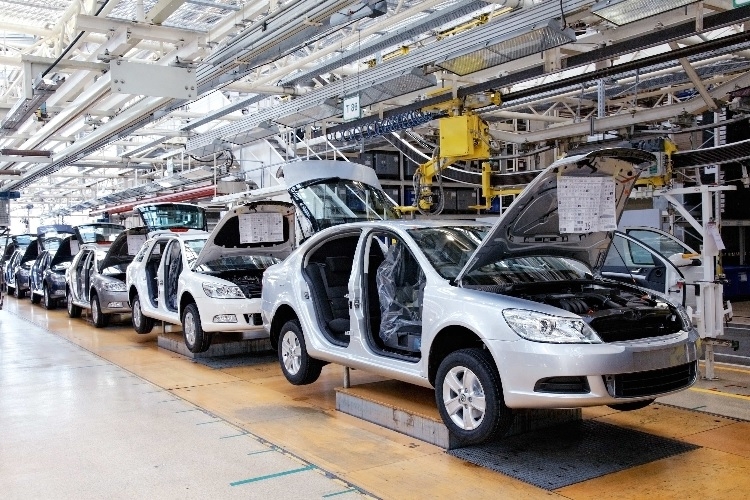Clarity offered through auto industry tax proposals
 |
| Clarity offered through auto industry tax proposals, Illustration photo |
Under the new proposal, a zero import tariff for car parts and accessories for domestic production would remain beyond 2022 as automobile manufacturers consider plans to expand production activities in Vietnam or shift part of their production chains elsewhere to the country in case such tax incentives are extended.
Tax incentives for imported auto parts are generally one of the most important preferential schemes for car manufacturers in Vietnam, enhancing competitiveness for local car assemblers. However, production capacity is one of the main criteria for local companies to enjoy the tax incentive programme.
According to industry insiders, the incentive could help enterprises increase production capacity, set plans to continue to invest in new production lines in Vietnam, and resume production and reassemble a number of models that had previously ceased production in Vietnam.
In 2020, most car manufacturers in Vietnam achieved minimum overall output, including Toyota, Hyundai Thanh Cong, Truong Hai Auto Corporation, and VinFast.
According to the Vietnam Automobile Manufacturers Association, some automakers such as TC Motors and VinFast have reached a minimum overall output of 11,500 units for six months as the main criteria set by the Ministry of Finance (MoF) to enjoy the tax, in which, Hyundai Thanh Cong has more than 29,000 units, Kia more than 21,500 units, VinFast nearly 16,000 units, Toyota with more than 14,500 units, and Mazda over 13,300 units.
Nguyen Thi Tue Anh, deputy director of the Central Institute for Economic Management, said that the continuously increasing import volume shows that the demand for car consumption is still on the up. “Compared to Thailand or Indonesia, the cost of producing cars in Vietnam is high. Therefore, local authorities need to find solutions to reduce these costs and promote the development of supporting industries,” Anh said.
Although the current pandemic remains complicated, the number of cars imported to Vietnam in July 2021 still hit high figures. The number of completely-built-up (CBU) cars imported was estimated at around 17,000 vehicles with a turnover of $332 million, according to the General Department of Vietnam Customs.
In the first seven months of 2021, the number of CBU cars imported to Vietnam reached about 98,000 units with a total turnover of $2.1 billion – an increase of 116.9 per cent in volume and 111.4 per cent in turnover on year. Vietnam mostly imports cars under nine seats from Thailand and Indonesia that account for 80 per cent of total imported CBU cars.
Pham Van Dung, general director of Ford Vietnam, said that domestic car manufacturers have not yet met the price competitiveness factor because most of the components and accessories are still imported. Only a few components are produced domestically, but the production capacity is not large enough to ensure a good price. “The cost of producing and assembling cars in Vietnam is about 20 per cent higher than other countries in the region,” Dung said.
Meanwhile, Le Ngoc Duc from Huyndai Thanh Cong said that without a supportive policy, the goal of increasing market volume and the localisation rate will be hard to reach.
According to the MoF, between 2018 and 2020, the government issued a number of preferential policies on import tax for auto components and raw materials and supplies for auto production. These contributed to ironing out issues and promoting domestic production with supporting industries for the sector.
Last year the government issued Resolution No.115/NQ-CP on developing supporting industries. By 2025 Vietnamese enterprises should be able to manufacture highly-competitive spare parts that can satisfy 45 per cent of essential production, and will account for some 11 per cent of the production value of the entire industrial sector.
What the stars mean:
★ Poor ★ ★ Promising ★★★ Good ★★★★ Very good ★★★★★ Exceptional
Related Contents
Latest News
More News
- From easy money to selective bets: investment prospects for Vietnam in 2026 (January 06, 2026 | 16:51)
- Stock market starts 2026 with growth and governance in focus (January 06, 2026 | 08:45)
- Cake by VPBank posts strong gains in scale and efficiency leveraging AI focus (January 05, 2026 | 18:55)
- Banks step up listing plans in 2026 to strengthen capital and transparency (December 31, 2025 | 18:59)
- Ho Chi Minh City projects $10.5 billion remittance inflows in 2025 (December 31, 2025 | 18:58)
- New decree sharpens enforcement in securities market (December 31, 2025 | 18:53)
- Gold market reform advances as SBV receives applications for bullion production (December 30, 2025 | 12:07)
- EVN and AFD sign credit agreement for Vietnam’s first pumped storage hydropower plant (December 30, 2025 | 10:06)
- Techcombank Priority Visa Signature unlocks a higher standard of living (December 29, 2025 | 16:44)
- Tax sector wraps up 2025 and sets priorities for next year (December 25, 2025 | 14:00)

 Tag:
Tag:



















 Mobile Version
Mobile Version